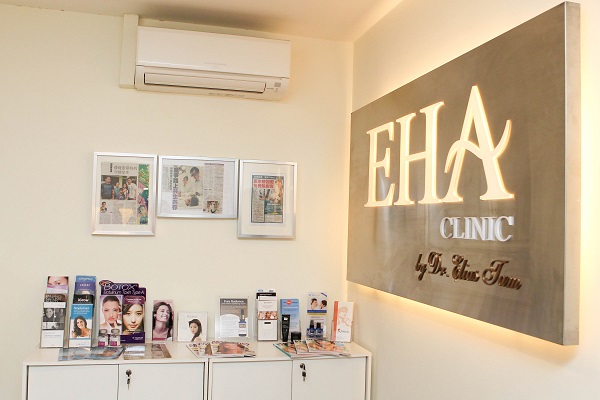Facial Contouring: Q&A with aesthetic specialist Dr. Elias Tam
mis à jour le 7 October 2015 à 00:03
Spotted on many Korean idols, the V-shaped face is indubitably the most sought after face shape in Asia - Dr. Elias Tam explains why.
Flawless double eyelids, plump lips and eternally youthful skin all doctored to perfection, these are but a few common traits found in many celebrities of today - largely from the pretty boys and angelic girls of the K-wave that has been sweeping across continents.
While some might agree that beauty lies in the eyes of the beholder, many still strive to attain the "ideal" form of beauty, namely distinct nose bridges, voluptuous busts, and a V-shaped face - the recent craze also known as facial contouring that has hit the land of the Plastics.
If you're guilty of fan-girling- we're definitely guilty as charged- over that perfect V-shaped chin spotted on Dara of 2ne1, Jessica of SNSD and even Taemin of SHINee, and are just dying to know how to attain that dainty and highly-coveted face shape, look no further. Singaporean aesthetic specialist Dr. Elias Tam who is one of the 16 Vice Presidents of the International College of Surgeons is here to share his expertise and give us some valuable insights on facial contouring and it's treatments.
Marie France Asia: What is it about the V-shaped look that makes it so highly coveted amongst females in Korea?
Dr. Elias Tam: Oriental beauty has always been associated with an oval face with a small mouth and sharp chin. Cartoonists are well aware of what their readers deem attractive, which is why many cartoons and anime always present the females characters with a round forehead and an incredibly sharp chin and V-shaped face.
On the other hand, Koreans are typically born with a broad and squarish face. However, with all the improvement in aesthetic treatments, one can now achieve a nice V-shape face safely.
Korean society has very little taboo against aesthetic procedures and the V shaped look has become a must-have look for many of the females in Korea.
Marie France Asia: What facial features best compliment the V-shaped look?
Dr. Elias Tam: Proportion is key to beauty. To carry off the V-shaped look, it is important to balance it with a rounded forehead, sharp nose and a pair of well-shaped lips.
Marie France Asia: Does the demand for the V-contour lie only in Asia?
Dr. Elias Tam: More specifically, this facial shape is highly coveted amongst the Chinese, Korean and Japanese. The Caucasians however, appear to prefer a slightly more prominent jawline.
Marie France Asia: Are there any plans to bring the facial contouring treatment to other parts of the world?
Dr. Elias Tam: With Asians gaining more prominence, the preferred facial shape may soon change. The Korean wave is spreading worldwide and with more exposure, people will start to adopt the V-shape face preference of their idols.
Marie France Asia: Can you explain to us in detail what the treatment is about and how it works?
Dr. Elias Tam: Facial contouring is actually a combination of 2 treatments. Firstly, filler is injected into the chin to lengthen it while botox is injected near the angle of the jaw (the masseter muscle) to reduce its prominence. The end result is a nice V-shape facial contour.
Marie France Asia: How would you advise a patient who is deciding between the surgical and non surgical method of facial contouring?
Dr. Elias Tam: The two methods have their own pros and cons.
The surgical method is permanent, where the surgeon would excise a large bony prominence of the jaw. It may also be the treatment of choice in certain severe cases. However, just as the result is permanent, any potential side effects such as scarring and injury to the nerve may also be permanent.
The non-surgical option is simple and fast. There is no downtime and it may be modified or reversed if the patient is not satisfied with the result. The down side of this treatment is that the patient will require repeat treatments to maintain the effect.
Marie France Asia: As the treatment requires the size of jaw muscles to be reduced, are there any possible side effects in the long run?
Dr. Elias Tam: If performed correctly, there is usually no long term side effects. In fact, if we do repeat the treatment closely around every 3-months for the first year, the reduction of the jaw muscle may even remain for years, even if we stop the treatment after the first year.
There have been some cases where patients have developed a resistance to Botox after repeated treatments. Fortunately, a new botolinium toxin type A, Xeomin, has been launched and has been shown to be free of this issue.
Annabelle Chew



